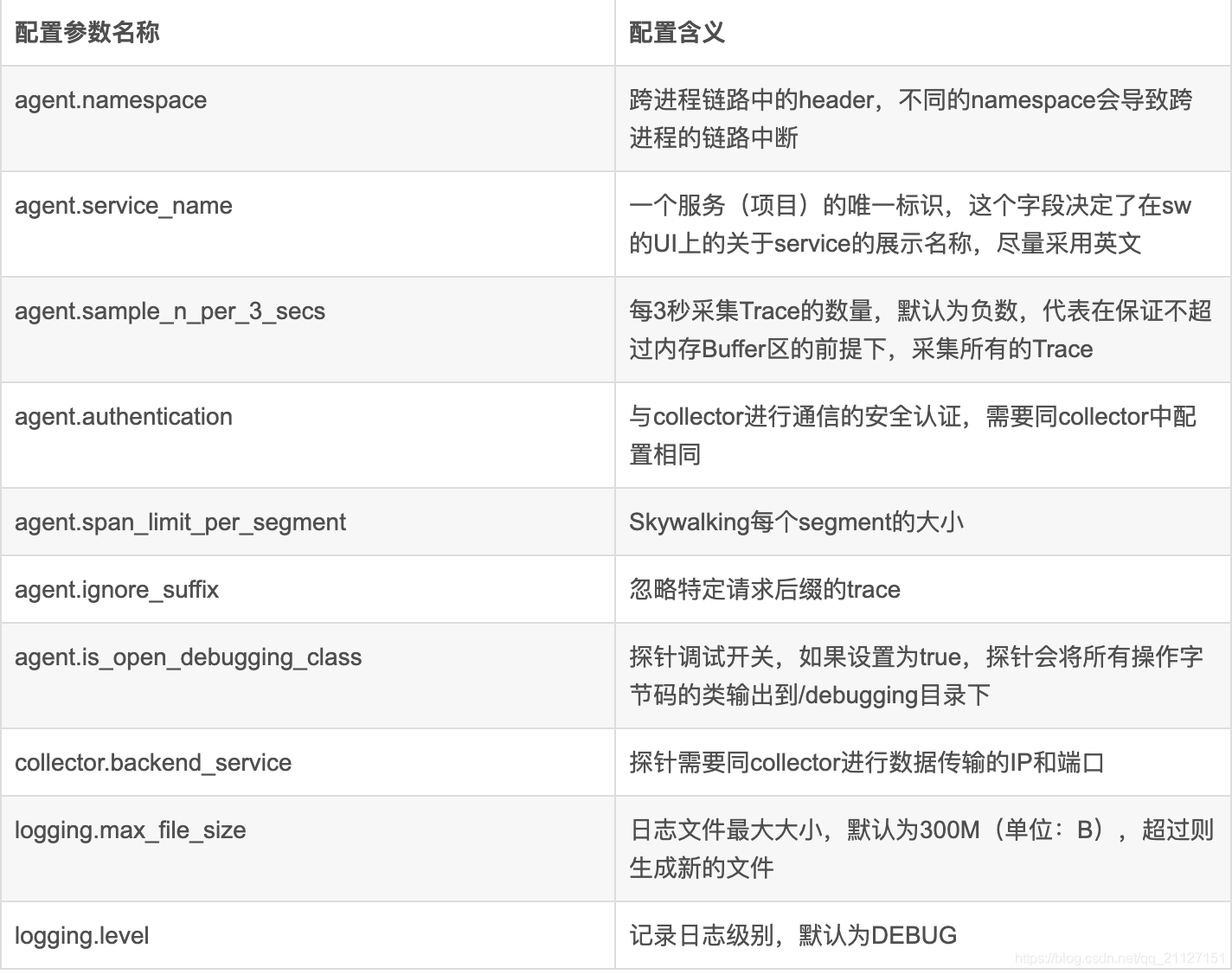SkyWalking is an open source monitoring platform for collecting, analyzing, aggregating and visualizing data from services and cloud native infrastructure. SkyWalking provides an easy way to maintain a clear view of distributed systems, even across the cloud. It is a modern APM designed specifically for cloud native, container based distributed systems.
SkyWalking monitors applications from three dimensions: service, service instance, and endpoint
Not much about services and instances. An endpoint is a path or URI in a service
SkyWalking allows users to understand the topology relationship between Services and Endpoints, to view the metrics of every Service/Service Instance/Endpoint and to set alarm rules.
SkyWalking allows users to understand the topological relationship between services and endpoints, view the metrics of each service / service instance / endpoint, and set alarm rules.
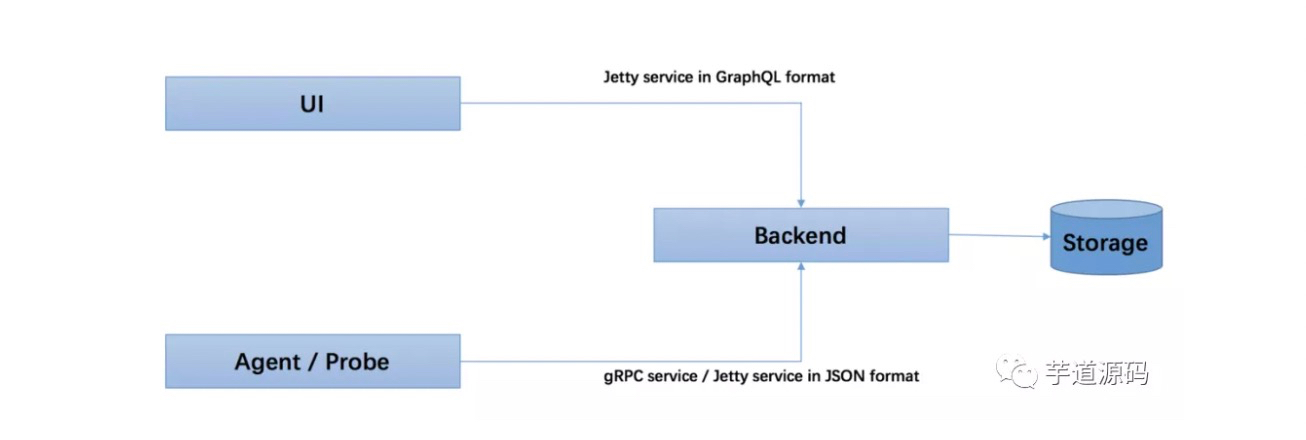
SkyWalking is logically divided into four parts: Probes, Platform backend, Storage and UI
This structure is very clear. The probe is the Agent, which is responsible for collecting data and reporting it to the server. The server processes and stores the data, and the UI is responsible for displaying it
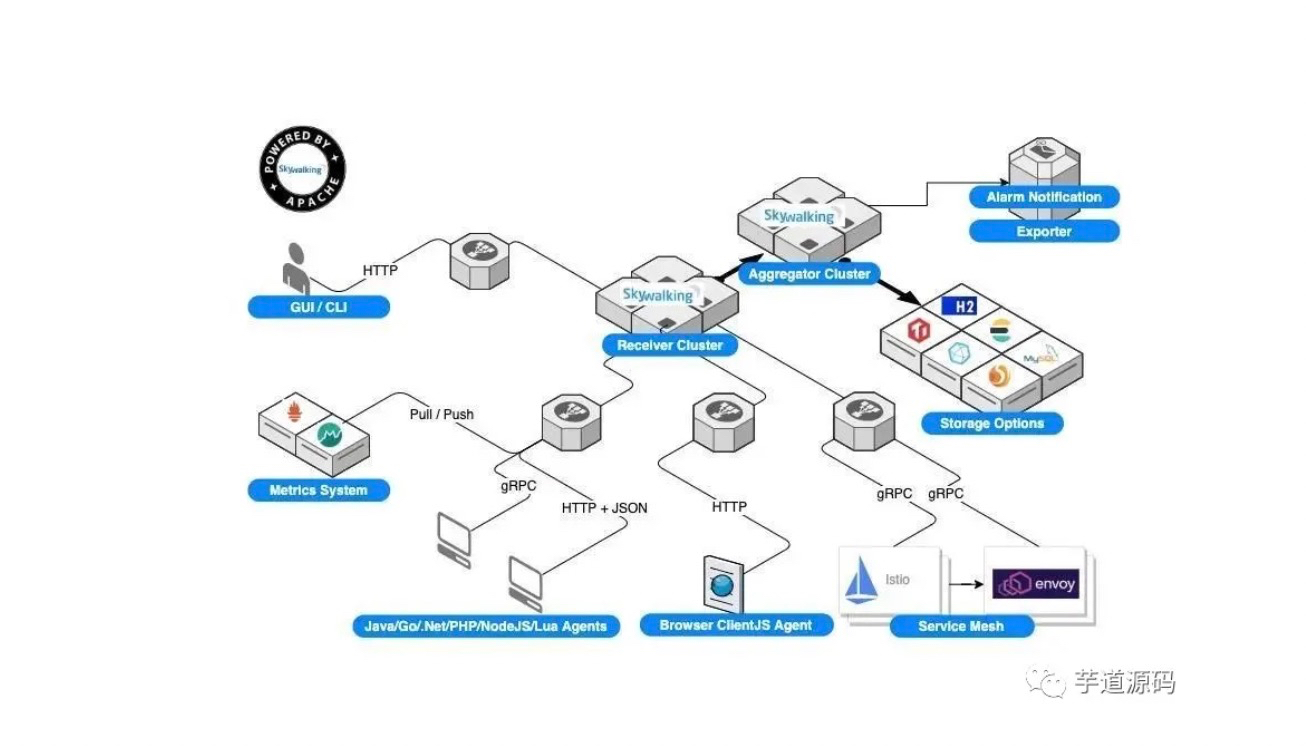
SkyWalking has two versions, ES version and non es version. If we decide to use ElasticSearch as storage, download the ES version.
Friendly note: the two versions here are not prepared. SkyWalking supports ES, MySQL, etc. as memory to read and write link and other information.
In general, we recommend using ES memory.
https://skywalking.apache.org/downloads/
https://archive.apache.org/dist/skywalking/
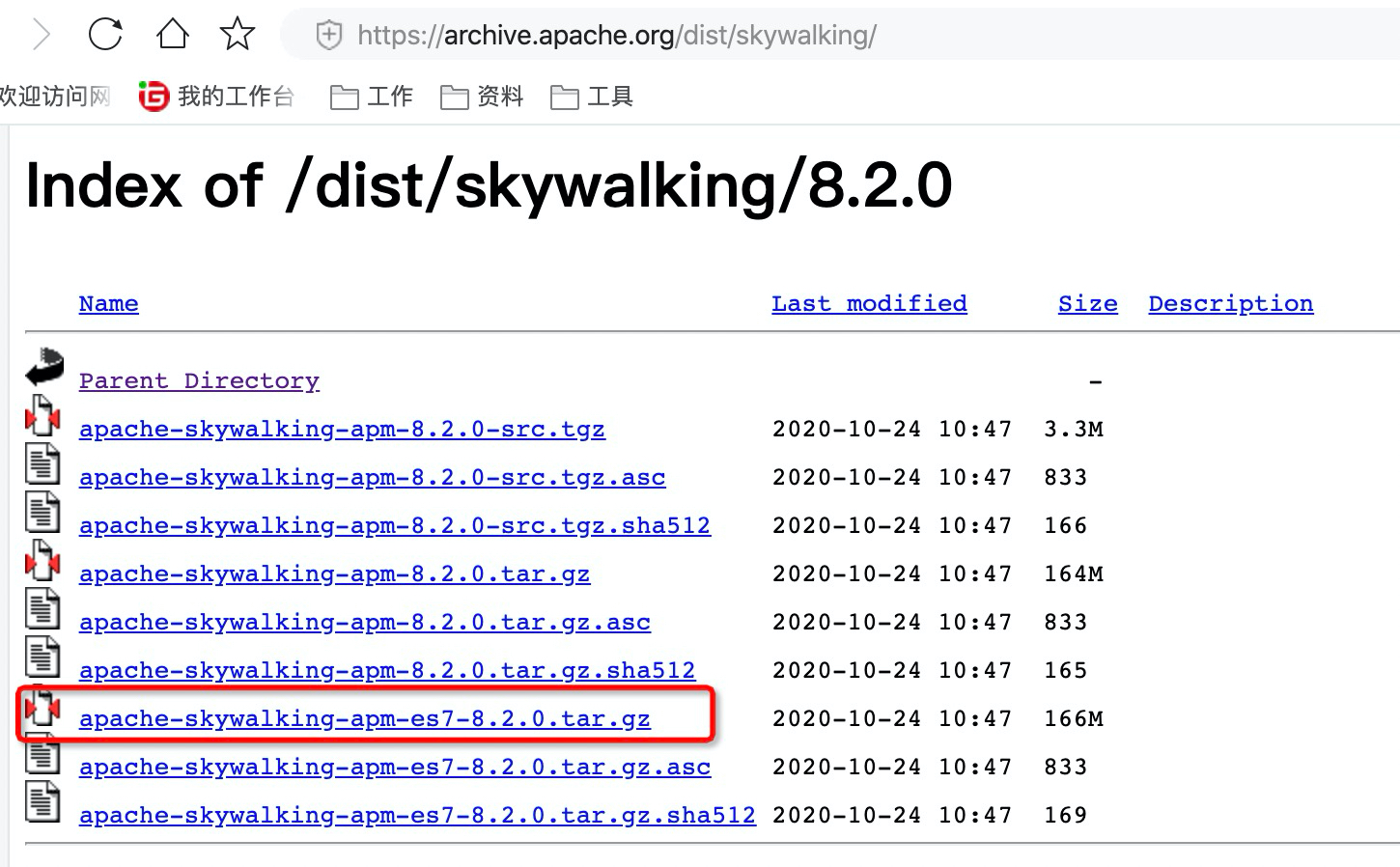
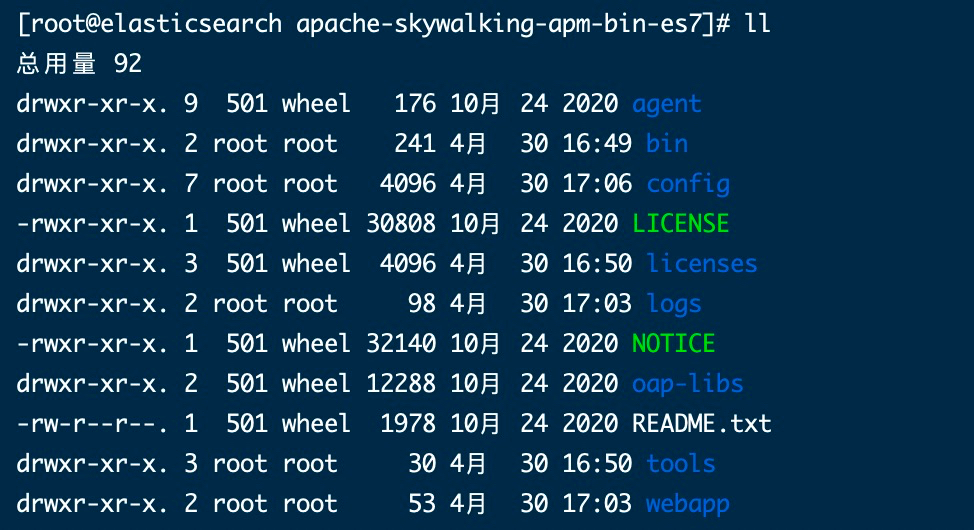
- The agent directory will be copied to the machine where each service is located as a probe in the future
- The bin directory is the service startup script
- The config directory is a configuration file
- The oap LIBS directory is the jar package required for the operation of the oap service
- The webapp directory is the jar package required for the web service to run
Next, you need to select storage. The supported storage includes:
- H2
- ElasticSearch 6, 7
- MySQL
- TiDB
- InfluxDB
As a monitoring system, H2 and MySQL are excluded first. Here we recommend InfluxDB, which is a time series database and is very suitable for this scenario
But I'm not very familiar with InfluxDB, so I'll use ElasticSearch7 first
https://github.com/apache/skywalking/blob/master/docs/en/setup/backend/backend-storage.md
2.1. Install ElasticSearch (omitted) see other blogs
Next, in config / application Configure the es address in YML
storage:
selector: ${SW_STORAGE:elasticsearch7}
elasticsearch7:
clusterNodes: ${SW_STORAGE_ES_CLUSTER_NODES:192.168.54.130:9200}https://github.com/apache/skywalking/blob/v8.2.0/docs/en/setup/service-agent/java-agent/README.md
Copy the agent directory to the machine where each service is located
Here, I copy it to each service directory
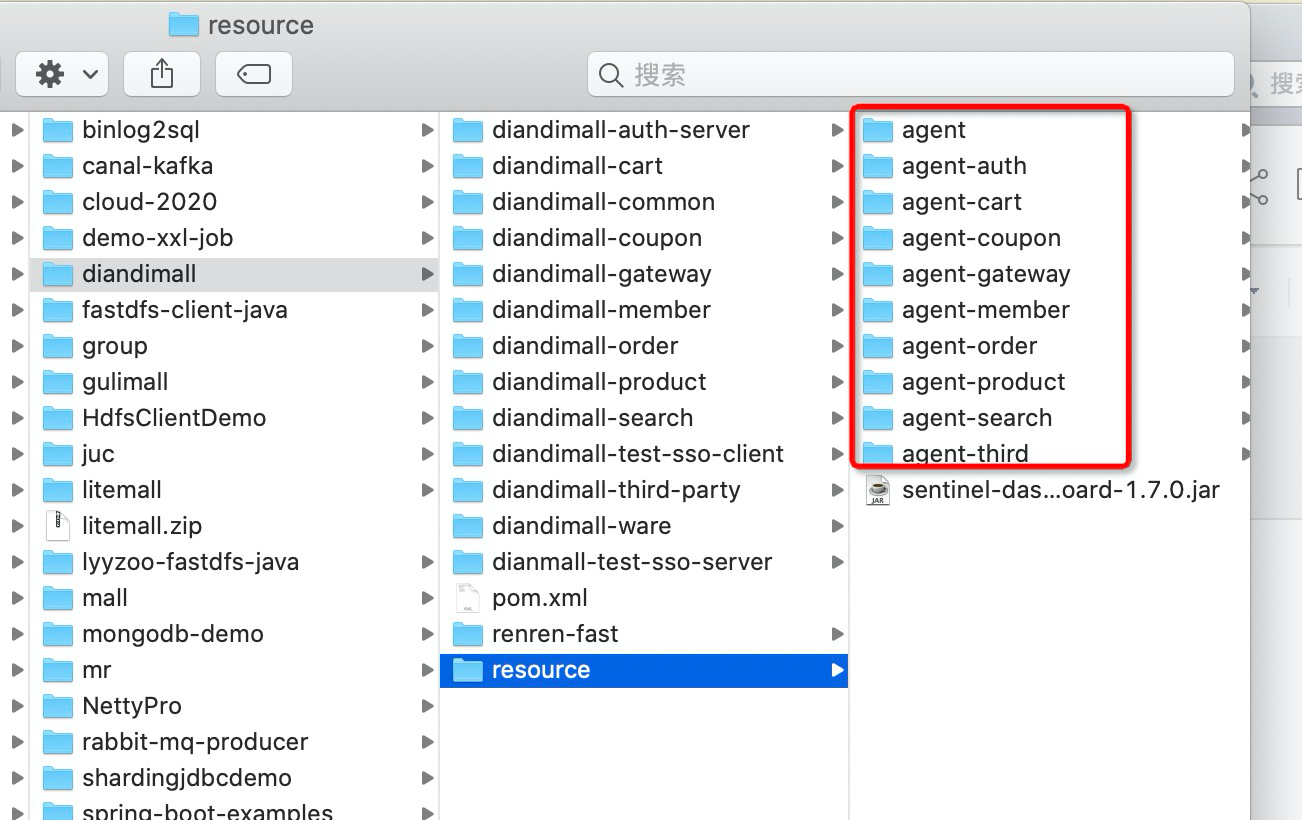
Plugins are various plug-ins used by probes. SkyWalking plug-ins are plug and play. You can put the plug-ins in optional plugins into plugins
Modify agent / config / agent Config configuration file, which can also be specified through command line parameters
It mainly configures the service name and back-end service address
agent.service_name=${SW_AGENT_NAME:diandimall-product}
collector.backend_service=${SW_AGENT_COLLECTOR_BACKEND_SERVICES:192.168.54.130:11800}Of course, it can also be set through environment variables or system attributes, for example:
export SW_AGENT_COLLECTOR_BACKEND_SERVICES=127.0.0.1:11800
Finally, the probe is specified with the command line parameter - javaagent when the service is started
java -javaagent:/path/to/skywalking-agent/skywalking-agent.jar -jar yourApp.jar
for example
java -javaagent:./agent/skywalking-agent.jar -Dspring.profiles.active=dev -Xms512m -Xmx1024m -jar demo-0.0.1-SNAPSHOT.jar
Configuration in idea
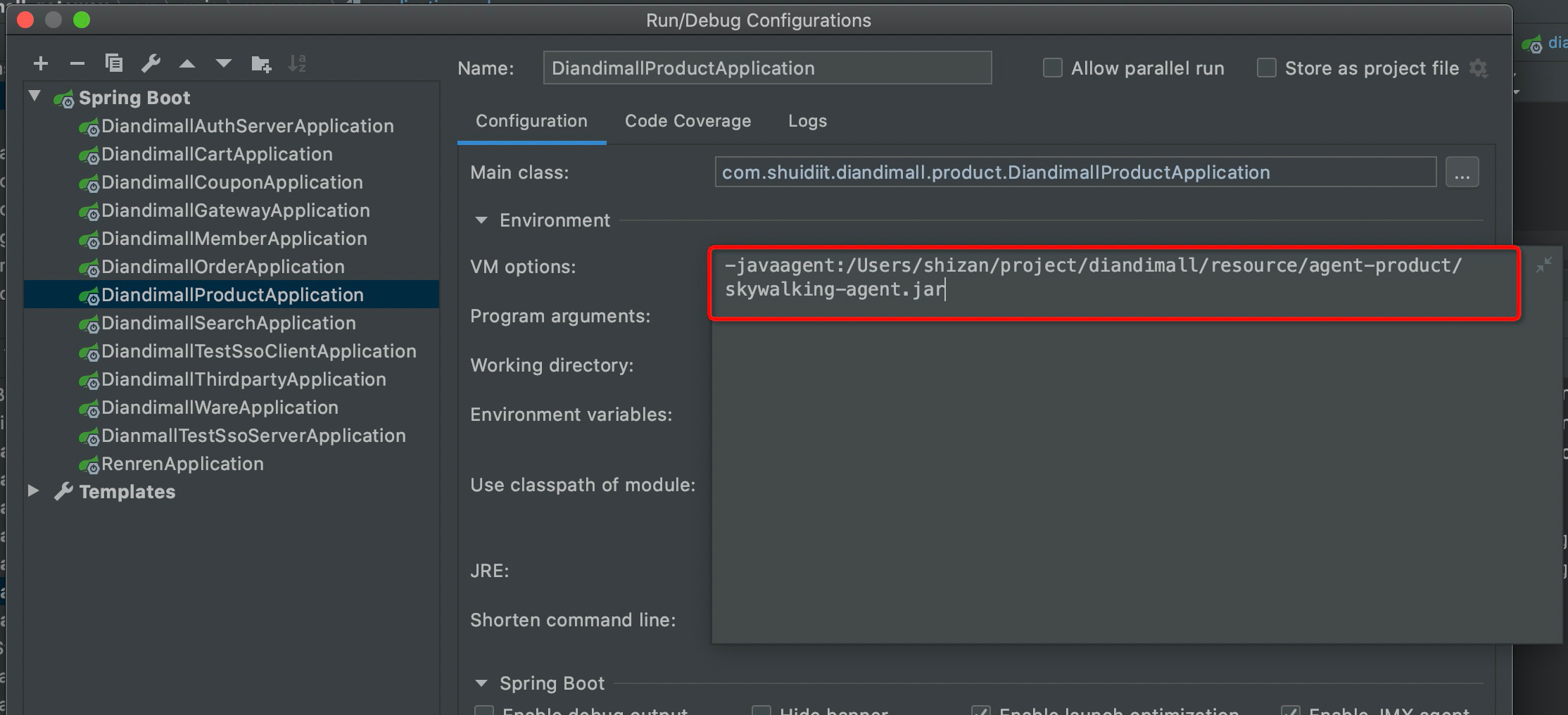
Or just deploy one agent and reset the service name in skywalking in the startup command
The configuration priority is as follows:
Probe parameters > System Properties > system environment variables > profile
Probe parameters:
-javaagent:/path/to/skywalking-agent.jar=[option1]=[value1],[option2]=[value2]
System properties
-Dskywalking.agent.service_name=sw-demo
1. Through the following agent service_ Override of name
-javaagent:./agent/skywalking-agent.jar=agent.service_name=skywalking_mysql
Special characters
If the configuration contains a separator (, or =), it must be enclosed in quotation marks
-javaagent:./agent/skywalking-agent.jar=agent.ignore_suffix='.jpg,.jpeg'
2. System properties
-Dskywalking.agent.service_name=skywalking_mysql
-javaagent appoint agent jar Package location -Dskywalking.agent.service_name Specify the service name -Dskywalking.collector.backend_service appoint oap Address of the service
Other related configurations - not tested
#Print specific sql
# mysql plugin configuration
plugin.mysql.trace_sql_parameters=${SW_MYSQL_TRACE_SQL_PARAMETERS:true}
#mongodb record operation parameters are additionally added with the following configuration contents:
# mongodb plugin configuration
plugin.mongodb.trace_param=${SW_MONGODB_TRACE_PARAM:true}Modify webapp / webapp YML file, change the port number and back-end service address
server:
port: 8080
collector:
path: /graphql
ribbon:
ReadTimeout: 10000
# Point to all backend's restHost:restPort, split by ,
listOfServers: 127.0.0.1:12800Start service
bin/startup.sh
Or start them in turn
bin/oapService.sh bin/webappService.sh
Check the log file in the logs directory to see if it is started successfully
Browser access http://192.168.54.130:8080
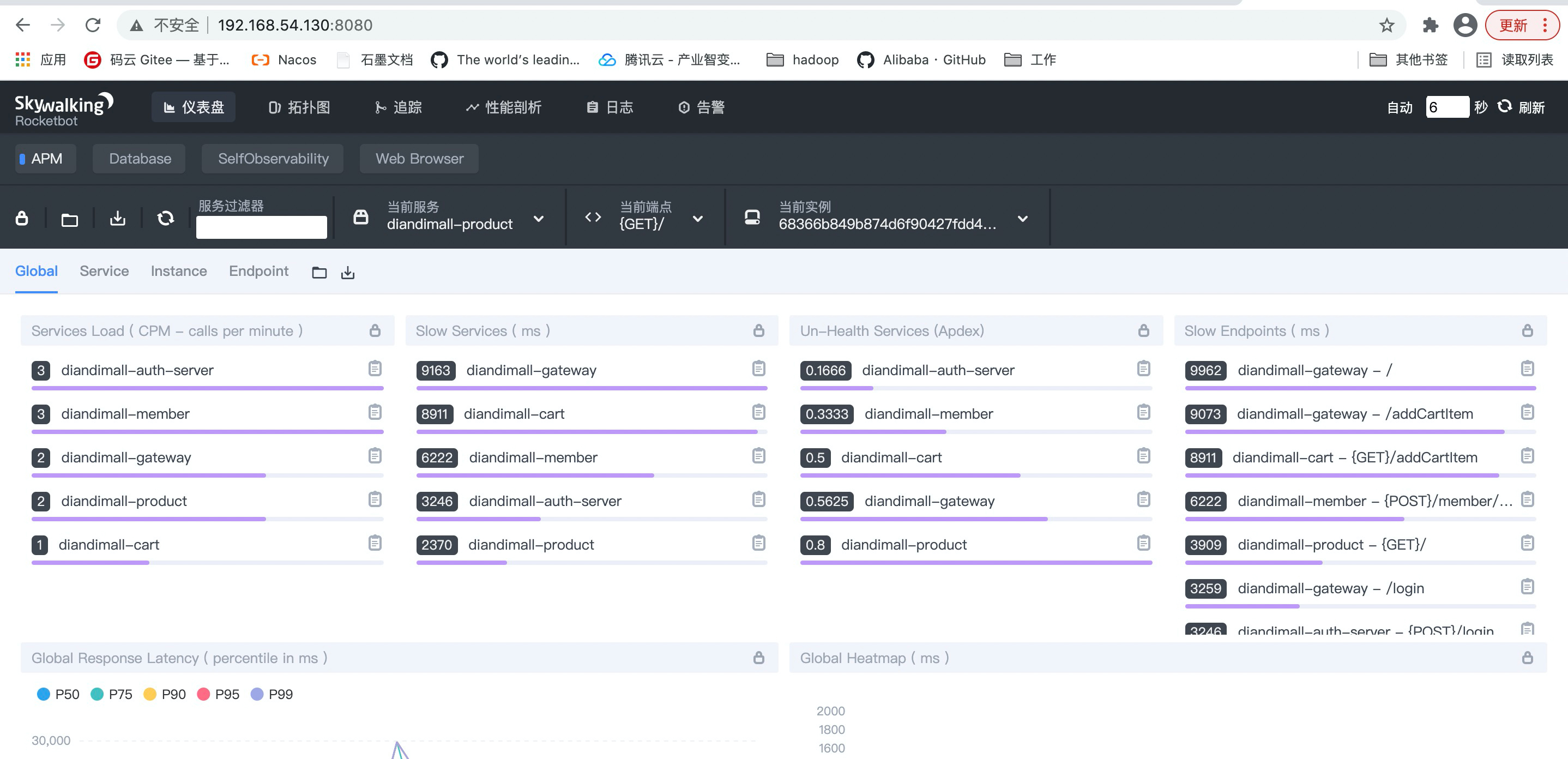
4. Alarm (not studied)

Edit alarm settings YML set alarm rules and notifications
https://github.com/apache/skywalking/blob/v8.2.0/docs/en/setup/backend/backend-alarm.md
Focus on the alarm notification
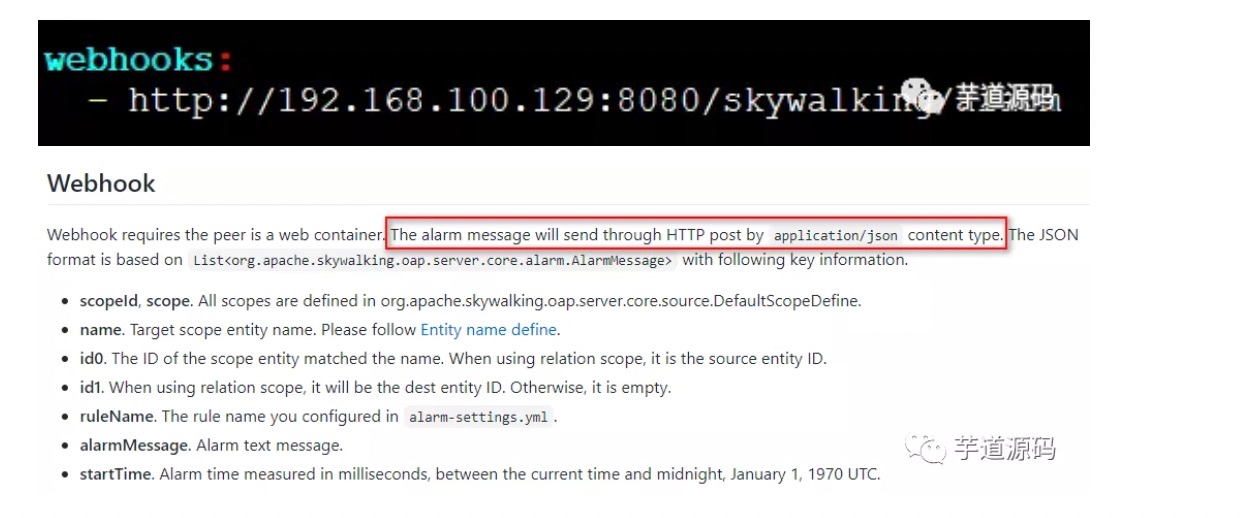
In order to use the nailing robot notification, next, create a new project
<?xml version="1.0" encoding="UTF-8"?>
<project xmlns="http://maven.apache.org/POM/4.0.0" xmlns:xsi="http://www.w3.org/2001/XMLSchema-instance" xsi:schemaLocation="http://maven.apache.org/POM/4.0.0 https://maven.apache.org/xsd/maven-4.0.0.xsd">
<modelVersion>4.0.0</modelVersion>
<parent>
<groupId>org.springframework.boot</groupId>
<artifactId>spring-boot-starter-parent</artifactId>
<version>2.4.0</version>
<relativePath/> <!-- lookup parent from repository -->
</parent>
<groupId>com.wt.monitor</groupId>
<artifactId>skywalking-alarm</artifactId>
<version>1.0.0-SNAPSHOT</version>
<name>skywalking-alarm</name>
<properties>
<java.version>1.8</java.version>
</properties>
<dependencies>
<dependency>
<groupId>org.springframework.boot</groupId>
<artifactId>spring-boot-starter-web</artifactId>
</dependency>
<dependency>
<groupId>com.aliyun</groupId>
<artifactId>alibaba-dingtalk-service-sdk</artifactId>
<version>1.0.1</version>
</dependency>
<dependency>
<groupId>commons-codec</groupId>
<artifactId>commons-codec</artifactId>
<version>1.15</version>
</dependency>
<dependency>
<groupId>com.alibaba</groupId>
<artifactId>fastjson</artifactId>
<version>1.2.75</version>
</dependency>
<dependency>
<groupId>org.projectlombok</groupId>
<artifactId>lombok</artifactId>
<optional>true</optional>
</dependency>
</dependencies>
<build>
<plugins>
<plugin>
<groupId>org.springframework.boot</groupId>
<artifactId>spring-boot-maven-plugin</artifactId>
</plugin>
</plugins>
</build>
</project>Optional dependency (not recommended)
<dependency <groupId>org.apache.skywalking</groupId>
<artifactId>server-core</artifactId>
<version>8.2.0</version>
</dependency>Define alarm message entity class
package com.wt.monitor.skywalking.alarm.domain; import lombok.Data; import java.io.Serializable; /** * @author ChengJianSheng
* @date 2020/12/1 */ @Data public class AlarmMessageDTO implements Serializable { private int scopeId; private String scope; /** * Target scope entity name */
private String name; private String id0; private String id1; private String ruleName; /** * Alarm text message */
private String alarmMessage; /** * Alarm time measured in milliseconds */
private long startTime;
}Send nail robot message
ckage com.wt.monitor.skywalking.alarm.service; import com.dingtalk.api.DefaultDingTalkClient; import com.dingtalk.api.DingTalkClient; import com.dingtalk.api.request.OapiRobotSendRequest; import com.taobao.api.ApiException; import lombok.extern.slf4j.Slf4j; import org.apache.commons.codec.binary.Base64; import org.springframework.beans.factory.annotation.Value; import org.springframework.stereotype.Service; import javax.crypto.Mac; import javax.crypto.spec.SecretKeySpec; import java.io.UnsupportedEncodingException; import java.net.URLEncoder; import java.security.InvalidKeyException; import java.security.NoSuchAlgorithmException; /** * https://ding-doc.dingtalk.com/doc#/serverapi2/qf2nxq
* @author ChengJianSheng
* @data 2020/12/1 */ @Slf4j
@Service public class DingTalkAlarmService {
@Value("${dingtalk.webhook}") private String webhook;
@Value("${dingtalk.secret}") private String secret; public void sendMessage(String content) { try {
Long timestamp = System.currentTimeMillis();
String stringToSign = timestamp + "\n" + secret;
Mac mac = Mac.getInstance("HmacSHA256");
mac.init(new SecretKeySpec(secret.getBytes("UTF-8"), "HmacSHA256")); byte[] signData = mac.doFinal(stringToSign.getBytes("UTF-8"));
String sign = URLEncoder.encode(new String(Base64.encodeBase64(signData)),"UTF-8");
String serverUrl = webhook + "×tamp=" + timestamp + "&sign=" + sign;
DingTalkClient client = new DefaultDingTalkClient(serverUrl);
OapiRobotSendRequest request = new OapiRobotSendRequest();
request.setMsgtype("text");
OapiRobotSendRequest.Text text = new OapiRobotSendRequest.Text();
text.setContent(content);
request.setText(text);
client.execute(request);
} catch (ApiException e) {
e.printStackTrace();
log.error(e.getMessage(), e);
} catch (NoSuchAlgorithmException e) {
e.printStackTrace();
log.error(e.getMessage(), e);
} catch (UnsupportedEncodingException e) {
e.printStackTrace();
log.error(e.getMessage(), e);
} catch (InvalidKeyException e) {
e.printStackTrace();
log.error(e.getMessage(), e);
}
}
}AlarmController.java
package com.wt.monitor.skywalking.alarm.controller; import com.alibaba.fastjson.JSON; import com.wt.monitor.skywalking.alarm.domain.AlarmMessageDTO; import com.wt.monitor.skywalking.alarm.service.DingTalkAlarmService; import lombok.extern.slf4j.Slf4j; import org.springframework.beans.factory.annotation.Autowired; import org.springframework.web.bind.annotation.PostMapping; import org.springframework.web.bind.annotation.RequestBody; import org.springframework.web.bind.annotation.RequestMapping; import org.springframework.web.bind.annotation.RestController; import java.text.MessageFormat; import java.util.List; /** * @author ChengJianSheng
* @date 2020/12/1 */ @Slf4j
@RestController
@RequestMapping("/skywalking") public class AlarmController {
@Autowired private DingTalkAlarmService dingTalkAlarmService;
@PostMapping("/alarm") public void alarm(@RequestBody List<AlarmMessageDTO> alarmMessageDTOList) {
log.info("Alarm message received: {}", JSON.toJSONString(alarmMessageDTOList)); if (null != alarmMessageDTOList) {
alarmMessageDTOList.forEach(e->dingTalkAlarmService.sendMessage(MessageFormat.format("-----come from SkyWalking Alarm of-----\n[[name]: {0}\n[[message]: {1}\n", e.getName(), e.getAlarmMessage())));
}
}
}
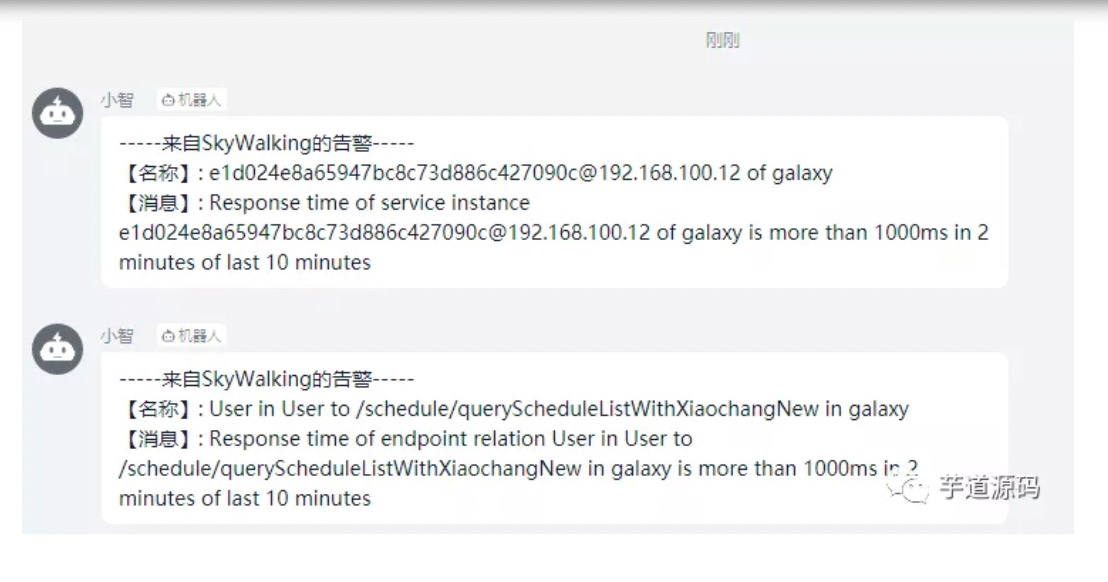
SkyWalking 8: summary of frequently asked questions
https://my.oschina.net/osgit/blog/4558674
